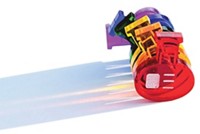Advertisement
Grab your lab coat. Let's get started
Welcome!
Welcome!
Create an account below to get 6 C&EN articles per month, receive newsletters and more - all free.
It seems this is your first time logging in online. Please enter the following information to continue.
As an ACS member you automatically get access to this site. All we need is few more details to create your reading experience.
Not you? Sign in with a different account.
Not you? Sign in with a different account.
ERROR 1
ERROR 1
ERROR 2
ERROR 2
ERROR 2
ERROR 2
ERROR 2
Password and Confirm password must match.
If you have an ACS member number, please enter it here so we can link this account to your membership. (optional)
ERROR 2
ACS values your privacy. By submitting your information, you are gaining access to C&EN and subscribing to our weekly newsletter. We use the information you provide to make your reading experience better, and we will never sell your data to third party members.
Consumer Products
Newscripts
Techy takes on women’s fashion
by Jessica Marshall
November 12, 2018
| A version of this story appeared in
Volume 96, Issue 45
Lab-friendly fashion

When chemist Beau Wangtrakuldee was in graduate school, she spilled methanol on herself. Even though she was wearing proper personal protective gear, including a lab coat, the solvent soaked through her jeans, irritating the skin on her legs. She felt like she had a bad sunburn for a week.
Years later, this experience motivated her to launch AmorSui, a start-up that aims to produce stylish, professional clothing made from flame- and chemical-resistant fabrics. Launched in February, the company has raised almost $14,000 so far through the iFundWomen crowdfunding site.
Wangtrakuldee interviewed 100 women scientists who said they might need to teach or attend meetings where they wanted to look presentable but still sought protection in the lab. Her first two items, which are fire resistant, are available for preorder—but a little pricey for a graduate student.
The “Rosalind Franklin pant” ($150), is a fitted blue pant with a back zipper “for dynamic women scientists like Rosalind Franklin to transition seamlessly from the lab bench to the boardroom,” according to the company’s website. The line also includes the Marie Curie dress ($180), a sleeveless, knee-length sheath that the Newscripts gang suspects would have been out of place in Curie’s closet.
A chemical-resistant shirt is in the works she says. And she hopes to expand into men’s wear eventually, too. Perhaps the Linus Pauling cargo pant? Or the Dmitri Mendeleev dinner jacket, to be worn periodically?
Pocket resistance

Twitter and the Newscripts gang can both attest to this truth: If a woman’s clothing, particularly a dress, has roomy pockets, she will almost certainly mention them should the conversation yield an opportunity. That’s partly because women have battled poorly pocketed garments seemingly forever. Now we have data to prove the point.
The visual journalists at the Pudding measured the pockets in 80 pairs of men’s and women’s jeans and presented their findings with animation and interactive graphics (pudding.cool/2018/08/pockets). “Our measurements confirmed what every woman already knows to be true: women’s pockets are ridiculous,” write authors Jan Diehm and Amber Thomas. They find that women’s front pockets are 48% shorter and 6.5% narrower, on average, than men’s.
On their story’s site, you can click on one of a number of items you might want to put in a pocket, including three models of cell phones, a front pocket wallet, and a hand, and their graphic will show you whether or how it fits in the pockets of the jeans they tested. For instance, only 40% of women’s front pockets but 100% of men’s can hold a wallet, they found.
AmorSui, the Newscripts gang has a suggestion for you to put in your pockets.
Jessica Marshall wrote this week’s column. Please send comments and suggestions to newscripts@acs.org.





Join the conversation
Contact the reporter
Submit a Letter to the Editor for publication
Engage with us on Twitter